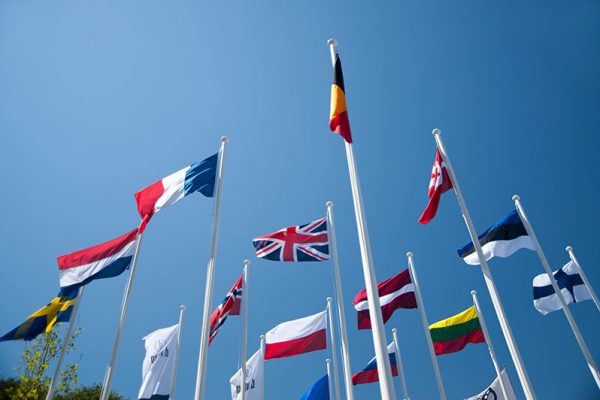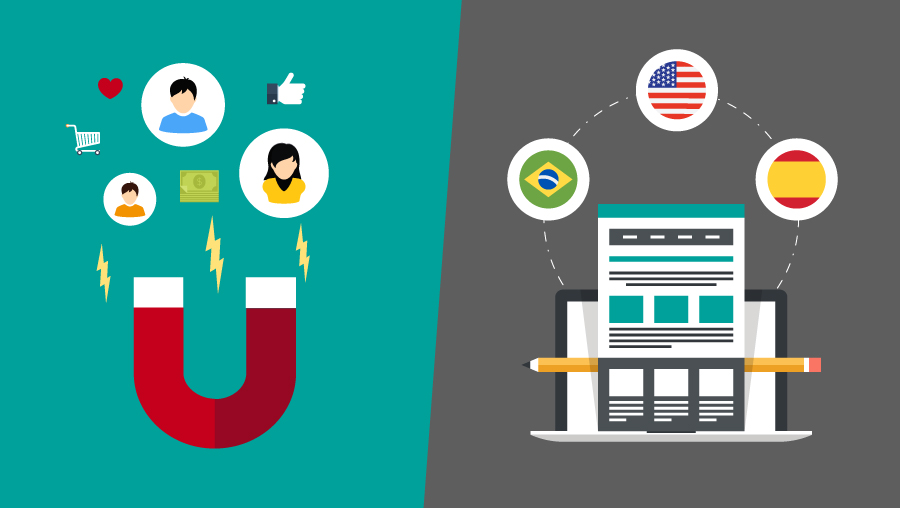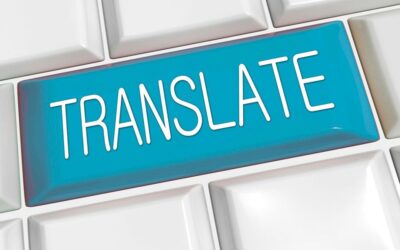B2B corporations face many difficult challenges when implementing an international marketing strategy. One of them is creating effective content in a new language that successfully captures the attention of the target audience. But, an excellent strategy to overcome this issue is by implementing the right technical translation program, which can be the starting point for a future inbound marketing plan.
Interested in Applying Inbound? Download Our Free Assessment to Learn If Your Brand Is Ready for Inbound Marketing
You’re in the right place if your brand is facing this common dilemma of how to create international content:
- Should you hire a technical translator to adapt your content to new markets? Also, which service would be ideal for your brand – technical translations, general translations, or machine translations?
- Or would it be better to invest more and build a content marketing program from scratch in for your target territory?

Creating effective international content isn’t easy, but with the right technical translations program, you’ll be on the right path to reach this goal.
While creating content from scratch is a great tactic, it’s unviable for some brands due to the high costs and other issues.
A translations program, on the other hand, could be more cost-effective and ideal as a primary strategy – but it needs to be approached correctly. Otherwise, the resulting content can fail at attracting your target audience.
But let’s start by defining the key components of this duo.
General, machine, or technical translations. Which one to choose for international marketing?
Your B2B brand has been creating content in your local language for a while, and there are all sorts of technical documents lying around – white papers, customer stories, case studies, press releases, and more.
But, which is the best translation service to put them to use? Whoops, we already spoiled the answer – it’s technical translations.
Either way, let’s discuss every option available to give you an overarching, big picture understanding.
Machine translations

Machine translations refer to translations made by a computer. The most popular example you’re familiar with is Google Translate.
Machine translation services have many appealing benefits, such as their unbeatable cost and translation speed.
They’ve also considerably improved throughout the years, with much greater accuracy levels and features.
Unfortunately, none of that saves them from their biggest problem: their accuracy is still not there, up to par with humans.
Machine translations lack the personalization and adaptation to culture, accuracy, and overall quality needed to succeed in today’s competitive inbound landscape.
But you probably already knew that. Because, honestly, would you let Google Translate take the voice of your B2B brand?
We certainly wouldn’t.
General translations

General translations refer to translations made by humans that don’t specialize or have extensive knowledge in the industry.
According to Yasmin López, the Lead Spanish Translator at Signalis Group, this option is a more prominent contender than machine translations as they’re more accurate and have the “human touch”, but they’re not the most effective – at least when it comes to producing professional content that aligns with your buyer persona’s needs.
If you’re having a hard time deciding whether to use a general translations service or hiring a technical translator, read closely:
As we all know, today’s B2B consumers are very informed and judgemental in their purchase decisions (even in B2C, customers are too informed nowadays).
Additionally, most B2B industries require a great deal of time to get familiarized with the vocabulary and concepts. There are many little nuances that general writers can miss since attaining deep knowledge of an industry takes time.
Exceptional, error-free, and professional copy is not a luxury, but a requirement. How will you achieve that when the translator is less knowledgeable than the customer?
Technical translations showcase professionalism and expertise

There’s a huge difference in the final result of a general translation compared to a technical translation.
When your copy is handled by subject matter experts, it shows off in your content.
The vocabulary, perspective, tone, and overall quality increases engagement and trust towards your brand. Additionally, readers feel their problems are understood.
A translation delights your audience with professionalism and high standards, and your brand feels like something they can trust and rely on.
On the other hand, regular translations create the impression that your brand doesn’t consist of experts. They used to be more effective, but today’s customers are informed, critical, and have higher standards than ever.

Inbound Marketing to Power up Your International Strategy

Now, let’s talk about the second magical element that will make your international marketing plan shine.
The power of the inbound marketing methodology is nothing to laugh at. Its effectiveness is proven, admired, and widely acknowledged.
It simply works. And as a result, it took over the world in the last decade.
So, what is inbound marketing exactly?
According to Hubspot, Inbound marketing is a business methodology that attracts customers by creating valuable content and experiences tailored to them.
While outbound marketing interrupts your audience with content they don’t always want, inbound marketing forms connections they are looking for and solves problems they already have.
Inbound marketing attracts customers to your brand by offering valuable, personalized content and building relationships.
It consists of bringing people closer to your brand’s zone or bound before selling them anything – hence, IN–BOUND marketing.
OUT–BOUND marketing is the polar opposite.
Instead of warming up consumers and creating some sort of connection first, products are promoted right away, in an “in-your-face” way. TV ads are the perfect example.
The Shift From Outbound to Inbound

Before inbound took over, outbound was the king of the hill. It dominated traditional marketing mediums such as TV, radio, and news.
But today, we’re in the “Empowered Customer” era. Customers have more control over the ads and content they consume.
The shift from TV to the internet, the abundance of information, and the years of in-your-face promotions formed a customer base that quickly dismisses outbound-style ads.
Today’s customers have endless options and filter the content and brands they relate with.
As a consequence, there’s a competitive, inbound marketplace where businesses compete to offer the most valuable and relevant content.
In the inbound era, translating content for an international audience isn’t as easy as it seems.
According to Neil Patel, visitors to your blog and content are harder to get these days. Everybody is delivering great content, and it’s harder to attract people to your site.
Technical Translations and Inbound Marketing, How Do They Relate?

In B2B, high-quality translations are crucial.
B2B prospects closely pay attention to white papers, press releases, and other collateral materials – unveiling any elements that indicate a lack of expertise in the translations.
On top of that, today’s consumers expect relevant content that delights them and delivers based on their needs.
A poor translation doesn’t achieve any of this. It doesn’t have the personalization and quality to pull readers, and it screams “unprofessionalism!” right at your customers, says Signalis’ Lead Spanish Translator.
That’s why high-quality, personalized translations are a critical component to successfully attract international audiences.
But attuning your translations to a new audience and attracting it is challenging. Some issues we have identified in technical translations are:

- Wrong tone of voice
- Doesn’t adapt well to the audience’s culture
- Grammar mistakes
- Awkward translated text
- Limited vocabulary
These are just a few examples that can make your hard work fruitless.
And that’s not the worst scenario – bad translations can harm your brand and reputation.
With all of this in mind, how do you create translated content that showcases expertise, attunes to the reader’s culture, and pulls customers to your brand.
Although at this point, you must be wondering how a technical translation program and inbound marketing align.
Well, the point is that a professional technical translations program laser-target your buyer persona. Your buyer personas are specific to your industry, and nobody understands them more than a subject matter expert.
Since technical translators know who they’re dealing with, their writing speaks to them.
General translators can get a basic understanding by researching for a while, but they will never know your customers as deeply.
And through common mistakes, such as using the wrong terminology, your efforts and investment to have your content translated simply end up affecting your brand and leaving a poor impression among your potential customers.
On how a solid technical translation program aligns with a good marketing program for international audiences, Julian Arcila, Chief Strategy Officer at Signalis Group, said:
“When you’re attempting to communicate with an audience and you’re not paying attention to the quality of the message you’re delivering (form and quality of content), it shows a poor commitment from your brand towards that group of prospects.”
Simply speaking, technical translations help your inbound strategy shine by creating valuable, targeted content that attracts and connects customers to your brand.
Conclusion
Inbound marketing is almost a necessity in today’s landscape to attract good customers. Many translation services result in poor translations that don’t show appreciation for your readers, which is a core aspect of a good and solid marketing program.



![Inbound Marketing in Latin America, Key to Generate Leads [Assessment Included]](https://signalisgroup.com/wp-content/uploads/2021/04/inbound-marketing-400x250.jpg)



